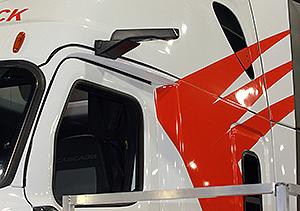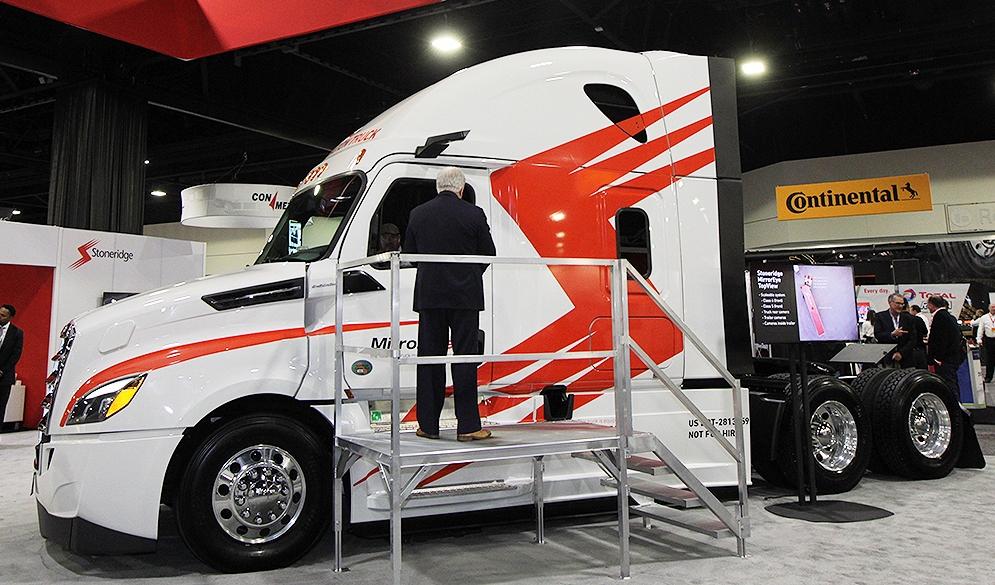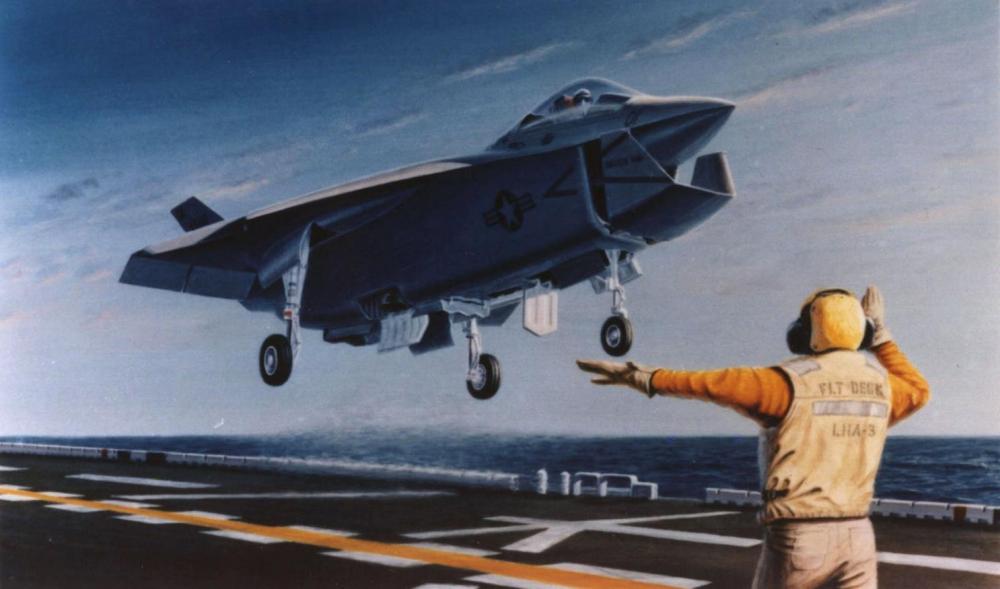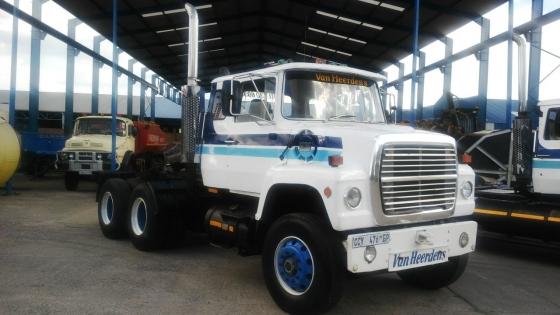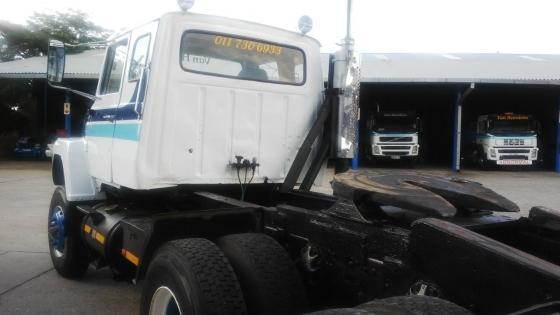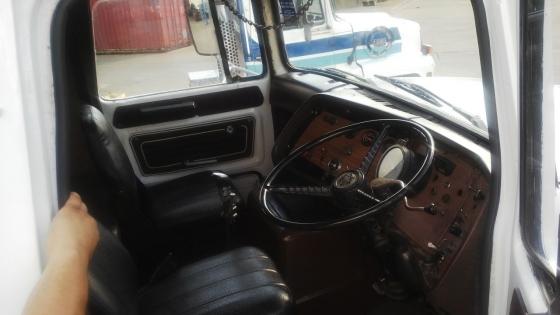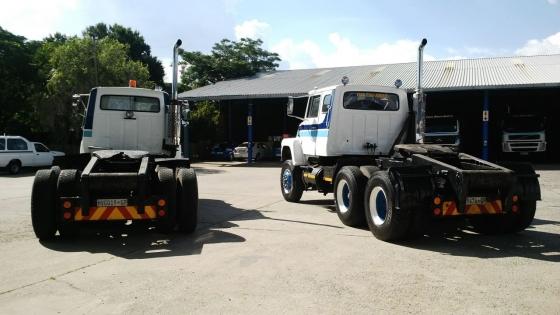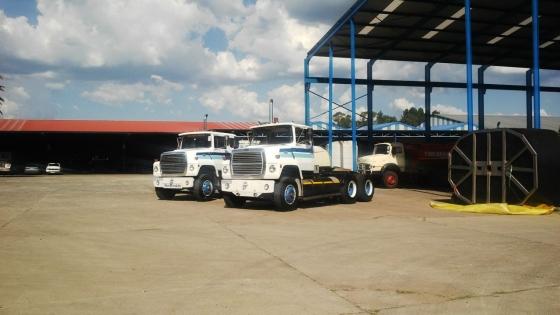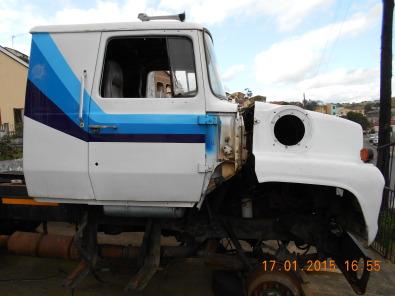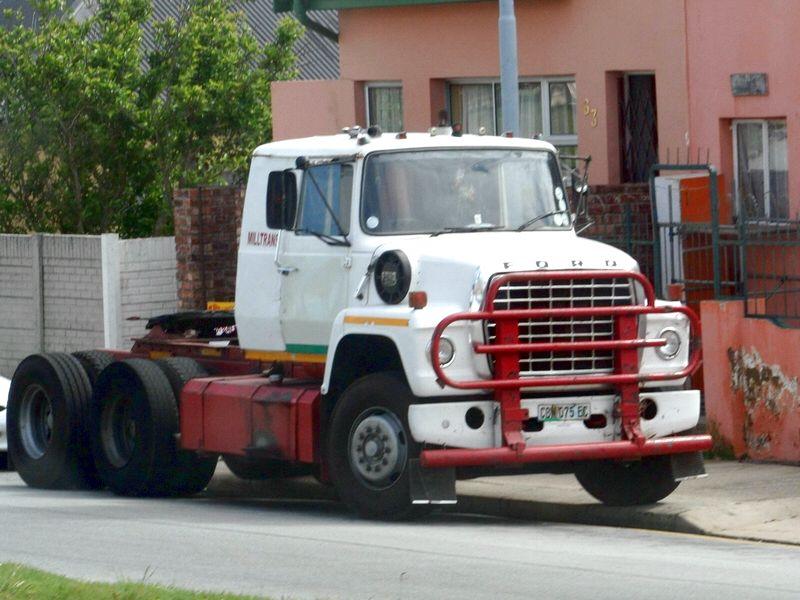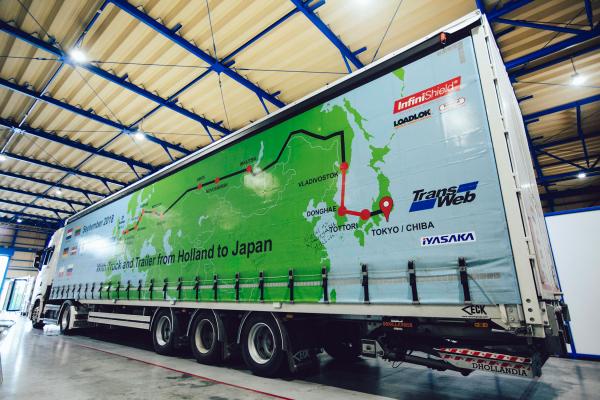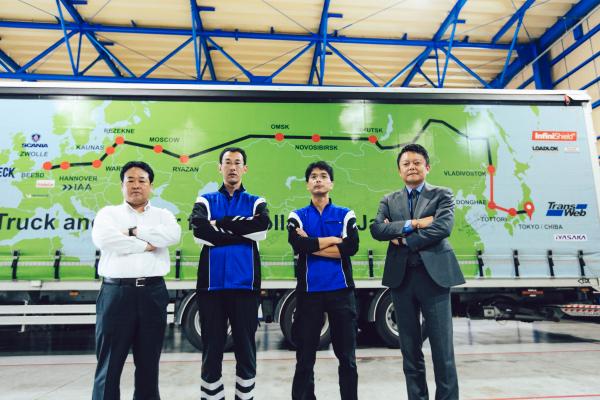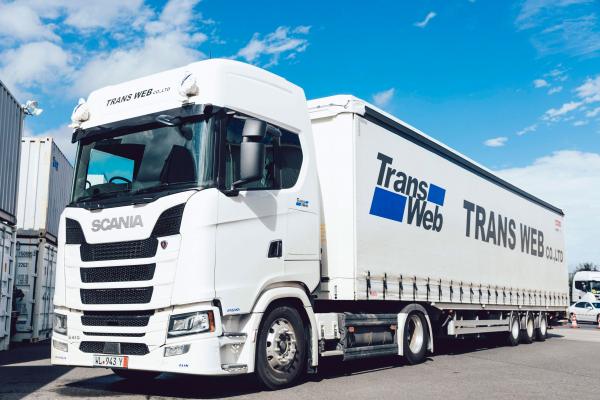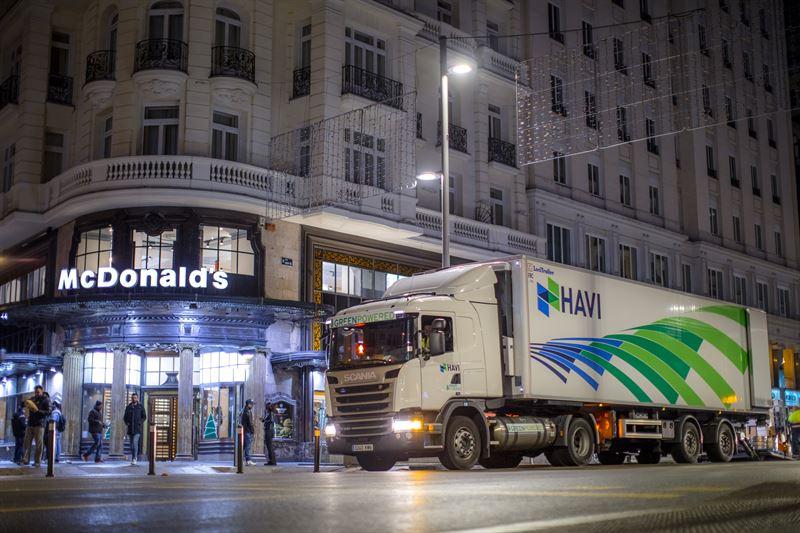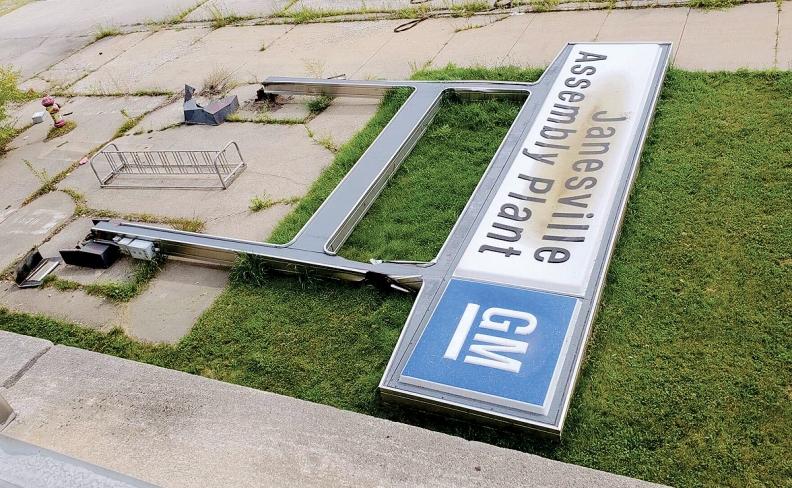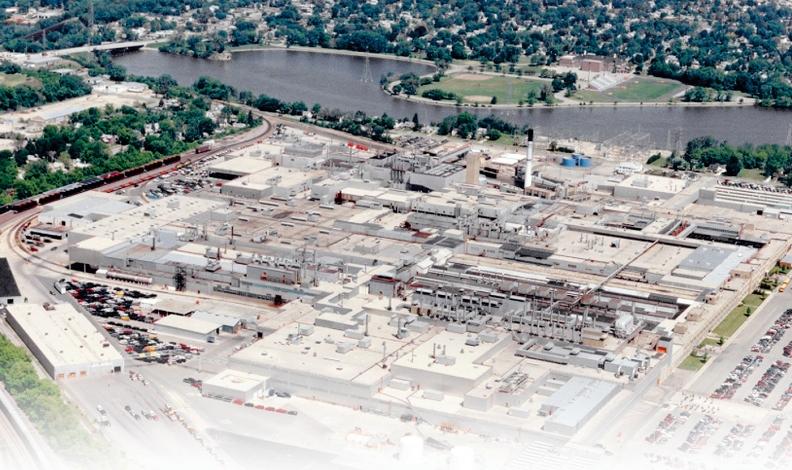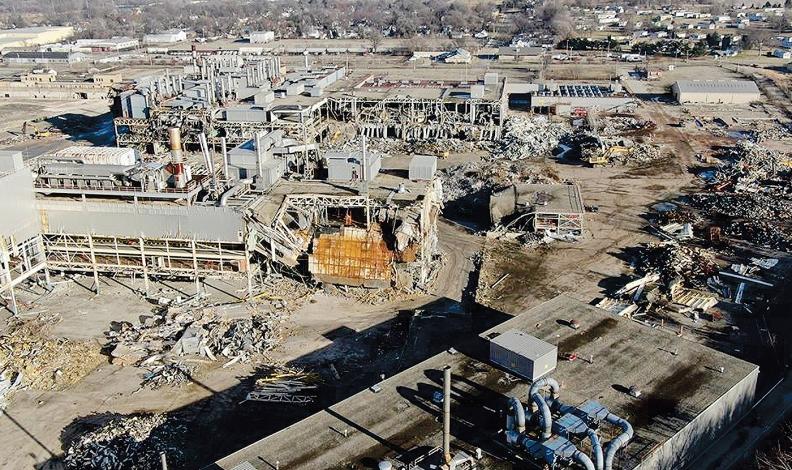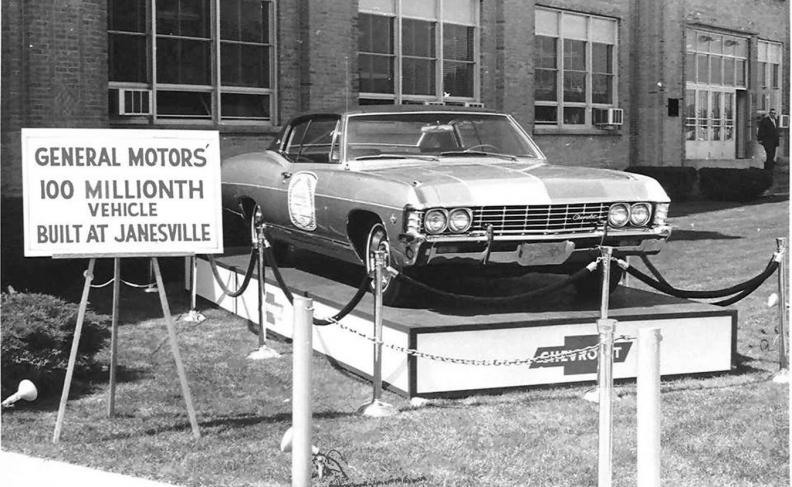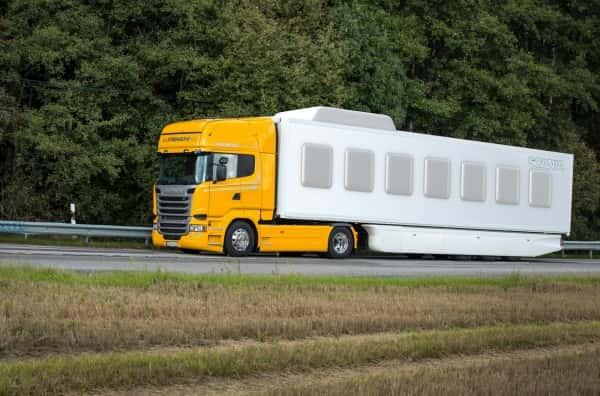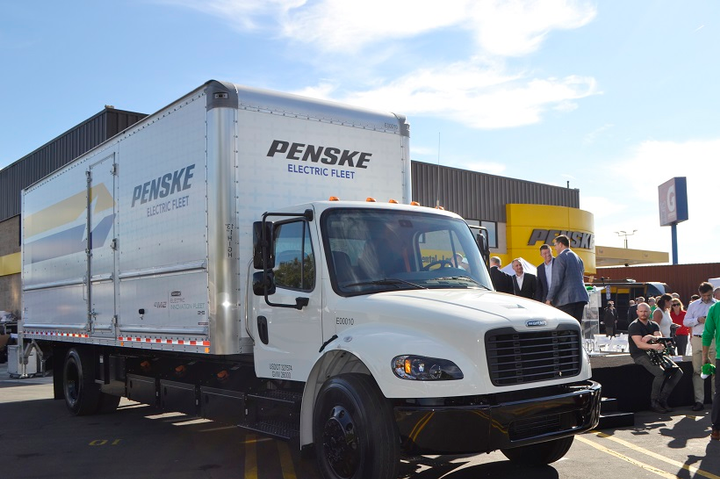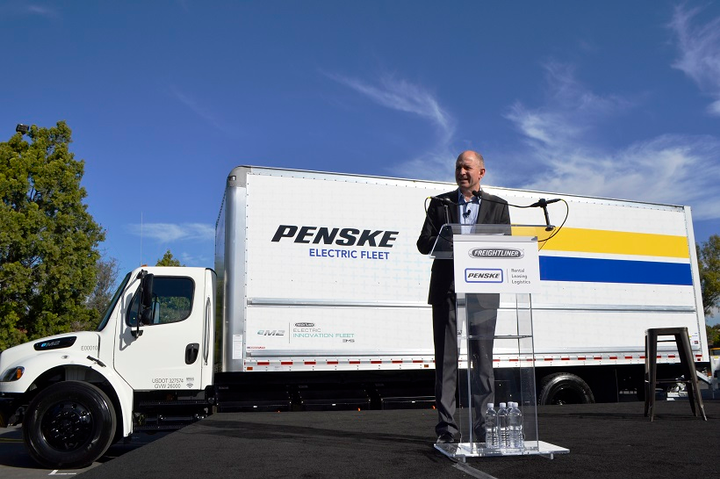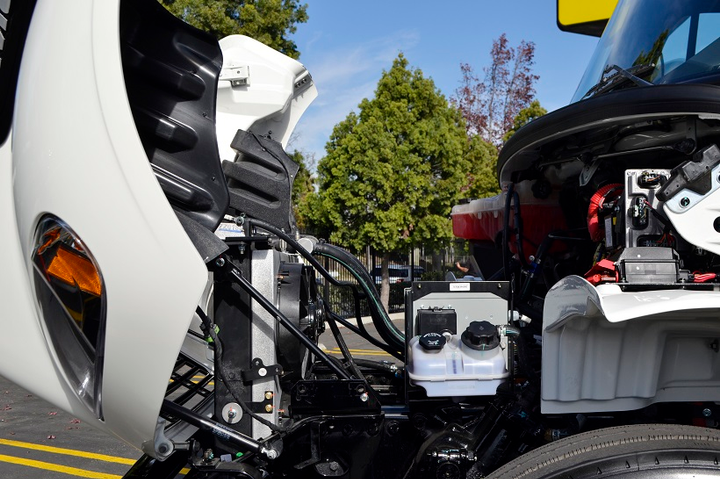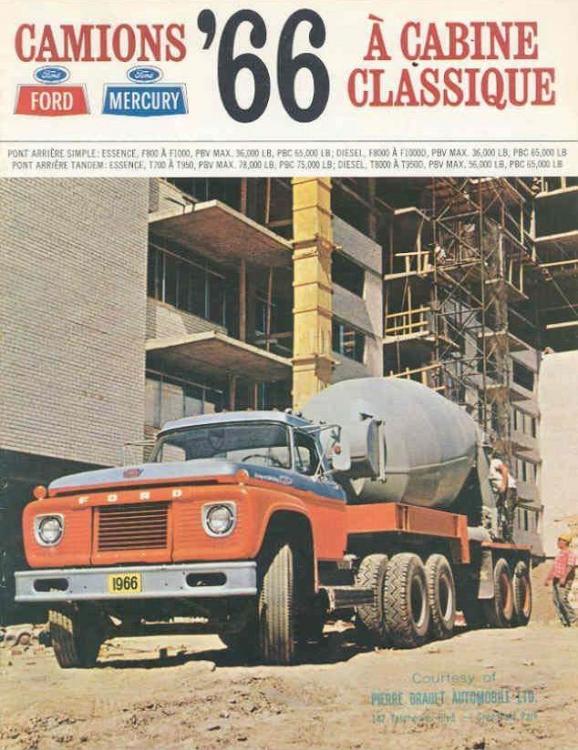
kscarbel2
Moderator-
Posts
18,911 -
Joined
-
Days Won
114
Content Type
Profiles
Forums
Gallery
Events
Blogs
BMT Wiki
Collections
Store
Everything posted by kscarbel2
-
Florida High School Shooting - 17 confirmed dead
kscarbel2 replied to kscarbel2's topic in Odds and Ends
Good review of the Florida massacre........http://projects.sun-sentinel.com/2018/sfl-parkland-school-shooting-critical-moments/ Not to be blunt but, given that he murdered 17 people........why hasn't Nikolas Cruz been executed yet? -
FMCSA OKs Stoneridge Camera System as Alternative to Mirrors
kscarbel2 replied to kscarbel2's topic in Trucking News
- 1 reply
-
- 1
-

-
Dan Ronan, Transport Topics / December 28, 2018 The Federal Motor Carrier Safety Administration on Dec. 26 announced it has issued a five-year exemption to Stoneridge Inc. to allow its aftermarket MirrorEye mirrorless digital camera and sensor system to be installed on trucks and motorcoaches as an alternative to traditional mirrors. Under current law, trucks and buses must have two outside mirrors positioned to show the driver a view of the highway to the rear, and the area along both sides of the commercial motor vehicle. In announcing its decision, FMCSA said, “The Agency has determined that granting the exemption to allow use of the MirrorEye system in lieu of mirrors would likely achieve a level of safety equivalent to or greater than the level of safety provided by the regulation.” The system works with five cameras, sensors and three digital displays. Along the right and left A-pillars are two 12.2-inch high-definition monitors, and another 7-inch display that is mounted high in the center of the cab. The displays are positioned within the driver’s line of sight to improve their reaction time as they scan their panel. In 2013, Glynn Spangenberg, the co-founder of original developer Spangenberg Partners, demonstrated the mirrorless camera and sensor system to American Trucking Associations’ Future Truck Committee. From there, his company took the idea to eventual manufacturer Stoneridge, where a prototype was developed and the two companies reached a sales agreement to market the concept to the trucking industry’s equipment aftermarket. More than a year ago they presented the system to FMCSA and requested the agency consider an exemption to the mirror regulation and allow trucks and buses to operate with their system and without mirrors. Speaking to Transport Topics, Spangenberg called the decision historic and praised FMCSA for “adapting to the rapidly evolving vehicle safety and automation capabilities of the trucking industry.” FMCSA officials also agreed with Stoneridge’s assertion that the all-weather cameras and sensors perform better than mirrors in rain, snow and ice, and low-vision conditions. Spangenberg said tests have shown that the mirrorless system decreases drivers’ head movement and the need to looking outside of the cab. By removing the mirrors there is also less aerodynamic drag on the vehicle and fuel efficiency will improve by 2% to 4%, Stoneridge says. Veteran trucking industry consultant Randy Mullett, of Mullett Strategies in Washington, D.C., told Transport Topics FMCSA’s decision is a victory for technology. “I think the big change isn’t going to be day-to-day driving in good weather conditions, but it’s going to be in those lousy conditions, it’s going to be at night, and it’s going to be in tight quarters when they realize I can always see the back end of my trailer,” Mullett said. “Think about that as eliminating blind spots, not just reliant on the blind spot radar detector, but you’ve got a camera doing it, that can pan and coordinate with those blind spot radars. This is really a great leap forward in driver-assist technology and I think makes us all better drivers.” Since 2017, Maverick Transportation, J.B. Hunt and Schneider National have been testing the technology. Spangenberg said those three companies have logged more than 2 million miles using the mirrorless system and their findings concerning the improvement in a driver’s overall situational awareness were included in the application submitted to FMCSA. .
-
Introducing the X-32 Stealth Fighter (The Plane That Could Have Replaced the F-35) David Majumdar, The National Interest / December 26, 2018 In October 26, 2001, the U.S. Department of Defense announced that Lockheed Martin’s X-35 had won the Joint Strike Fighter (JSF) contest over Boeing’s X-32. The win secured Lockheed’s future as the manufacturer for all of America’s fifth-generation fighter platforms. But Lockheed’s resultant F-35 has suffered myriad delay, technical glitches, unrecoverable technical shortfalls and massive cost overruns. Already the largest ever defense program with an estimated price tag of $233 billion in 2001 for a total of 2,866 aircraft, the F-35 program is now estimated to cost more than $391 billion for 2,457 jets, according to the Government Accountability Office . Moreover, while the short-takeoff vertical landing F-35B was originally projected to achieve initial operational capability with the U.S. Marines in 2010, it only reached that milestone in 2015—five years late. Meanwhile, the conventional F-35A and the F-35C carrier variant were both slated to achieve initial operational capability with Block 3 software in 2012—but that software block is now scheduled to be delivered for operational testing in 2017 at the earliest. Would Boeing have done any better? Hard to say—the Joint Strike Fighter was always a technically challenging and extraordinarily ambitious program. It is likely that Boeing would have run into similar but different technical and budgetary problems. The fundamental issue with the Joint Strike Fighter was that is was always an overambitious program to replace multiple specialized types with one aircraft in the hope that it could perform every role equally well. The result is predictably a jack-of-all-trades but master of none. One of the main reasons why Lockheed Martin’s design was selected over Boeing’s was because the X-32’s direct lift system—which uses engine thrust to lift the aircraft—is prone to pop stalls. That’s a phenomenon where hot exhaust gases are reingested into the engine causing a power loss. There were also questions as to whether the engine would be powerful enough to lift a fully operational F-32—the prototype had to have parts removed to ensure it would fly. It probably didn’t help Boeing’s case that it had to redesign the X-32 to meet the modified JSF requirements. An operational F-32 had a very different configuration from the X-32. Even if Boeing managed to solve the airframe issue, they would have had to deal with the extremely complex sensor fusion software. The software was always going to be a challenge under the best of circumstances. The only edge Boeing had was that it had developed the Lockheed Martin F-22’s avionics package—but the JSF is much more complex. Overall, it is very likely the Boeing would have run into the same sort of technical hiccups, cost overruns and delays as Lockheed did on the X-32. Lockheed mismanaged the F-35 program to an extent, but the Pentagon’s requirements for a all-in-one wonder plane is what caused the programs problems. With either company, the JSF program was almost certainly going to be late and over budget—it just a question of by what margin. .
-
Those South African RHD extended cab Louisvilles
kscarbel2 replied to kscarbel2's topic in Other Truck Makes
Bob, these would have sold well in the North American market. -
EU countries agree to 30 percent cut in truck CO2 emissions
kscarbel2 replied to kscarbel2's topic in Trucking News
You're the first person to note that......and the date. Separately, the death of the 7-year-old boy in the truck accident outside Toowoomba is very sad. -
Those South African RHD extended cab Louisvilles
kscarbel2 replied to kscarbel2's topic in Other Truck Makes
Designed by Mack, constructed by Orrville in Ohio. -
Those South African RHD extended cab Louisvilles
kscarbel2 replied to kscarbel2's topic in Other Truck Makes
Proof that Volvo copied American truckmaker Ford to create their "Integral Sleeper". -
https://www.junkmail.co.za/trucks/gauteng/other-gauteng/2-x-ford-louisville-trucks-for-sale/a1872f33b5d84ad4953fb9c1dbb7114c# .
-
Scania Group Press Release / December 27, 2018 TransWeb orders two new Scania trucks from the Netherlands… then drives them back to Japan. The specialist Japanese haulier TransWeb is well-known for its innovative approach to transport services. But the decision to travel overland from the Netherlands back to Japan with two new Scania S 410 trucks was exceptionally bold. After a gruelling total of 13,000 kilometres, the trucks recently arrived home safe and sound to their depot near Tokyo. TransWeb began as a motor sports logistics provider, and this remains a core part of its business. Nowadays, with 40 Scania trucks in the fleet, the company has expanded into event and concert transports, and vehicle transports of foreign-made cars. Driver comfort key for choosing Scania “Deploying Scania trucks not only helps to improve transport quality but also boosts the image of transported goods,” says Managing Director Takeshi Maezawa. “At TransWeb we really care about our drivers. By operating Scania trucks, they benefit from a spacious and comfortable cab that reduces fatigue, even when driving long distances.” It was against this background that Maezawa’s overland project was developed. “I have ideas that are a bit out of the box and TransWeb has both the passion and ability to realise them,” says Maezawa. “In our industry, we seem to focus on the negative, such as the lack of drivers, strict regulations, soaring fuel costs, environmental costs and the price of vehicles. Instead, we had the positive desire to pursue a dream.” Many raised concerns about safety but Maezawa was adamant. He declared that he would take full responsibility for the trip. And he lived up to his promise: in mid-September Maezawa and his team, including no fewer than four teams of drivers, travelled to Beesd in the Netherlands to pick up the trucks from trailer manufacturer Van Eck. An unprecedented feat Following a stop at the IAA Commercial Vehicles trade show in Germany, they travelled through Poland, Lithuania, Latvia and Russia, before reaching Japan at the end of October. “I believe that picking up trucks in Europe and driving them across Eurasia is unprecedented,” says a proud Maezawa. The driver teams usually travelled 600 kilometres a day but occasionally they managed to drive as far as 800 to 900 kilometres. Along the way, the TransWeb team made stops at Scania dealers in Russia, where events were organised to mark their special journey. Fumiaki Ohino, Head of Vehicle Management at TransWeb, oversaw the team that drove the 5,500 kilometres from Ryazan to Irkutsk. This gave him a good introduction to the new generation Scania. “The new trucks are quieter and the driver’s seat is also good,” he says. “The truck is easy to drive but the biggest improvement is the wider field of vision. But despite the larger cab, fuel consumption is surprisingly low.” Never stop dreaming The long drive through Russia – 10,000 kilometres – ended in Vladivostok where two trucks boarded the ferry to Tottori for the final 900-kilometre leg to TransWeb’s head office, about 50 kilometres east of Tokyo. Although Maezawa is thrilled by the “wonderful and incredible experience” he still has a taste for new adventures. “I will never stop seeking challenges and I am keeping an eye open for new bold ideas with Scania in the future.” .
-
Brasil
-
Bob, note the F-series at 1:31 .
-
Looks as though it was assembled yesterday Bob. .
-
Mnuchin is convening the “Plunge Protection Team.” What is he worried about? Stay alert for a negative market reaction.
-
Top Trump official calls bankers, will convene 'Plunge Protection Team' Jason Lange, Reuters / December 23, 2018 U.S. President Donald Trump’s Treasury secretary called top U.S. bankers on Sunday amid an ongoing rout on Wall Street and made plans to convene a group of officials known as the “Plunge Protection Team.” U.S. stocks have fallen sharply in recent weeks on concerns over slowing economic growth, with the S&P 500 index on pace for its biggest percentage decline in December since the Great Depression. “Today I convened individual calls with the CEOs of the nation’s six largest banks,” Treasury Secretary Steven Mnuchin said on Twitter shortly before financial markets were due to open in Asia. U.S. equity index futures dropped late on Sunday as electronic trading resumed to kick off a holiday-shortened week. In early trading, the benchmark S&P 500’s e-mini futures contract ESv1 was off by about a quarter of a percent. The Treasury said in a statement that Mnuchin talked with the chief executives of Bank of America, Citi, Goldman Sachs, JP Morgan Chase, Morgan Stanley and Wells Fargo. “The CEOs confirmed that they have ample liquidity available for lending,” the Treasury said. Mnuchin “also confirmed that they have not experienced any clearance or margin issues and that the markets continue to function properly,” the Treasury said. Mnuchin’s calls to the bankers came amid a partial government shutdown that began on Saturday following an impasse in Congress over Trump’s demand for more funds for a wall on the border with Mexico. Financing for about a quarter of federal government programs expired at midnight on Friday and the shutdown could continue to Jan. 3. The Treasury said Mnuchin will convene a call on Monday with the president’s Working Group on Financial Markets, which includes Washington’s main stewards of the U.S. financial system and is sometimes referred to as the “Plunge Protection Team.” The group, which was also convened in 2009 during the latter stage of the financial crisis, includes officials from the Federal Reserve as well as the Securities and Exchange Commission. Wall Street is also closely following reports that Trump has privately discussed the possibility of firing Federal Reserve Chairman Jerome Powell. Mnuchin said on Saturday Trump told him he had “never suggested firing” Powell. Trump has criticized the U.S. central bank for raising interest rates this year, which could further dampen economic growth. The Fed’s independence is seen as a pillar of the U.S. financial system. Mnuchin’s calls come as a range of asset classes have suffered steep losses. In December alone, the S&P 500 is down nearly 12.5 percent, while the Nasdaq Composite has slumped 13.6 percent. The Nasdaq is now in a bear market, having declined nearly 22 percent from its record high in late August, and the S&P is not far off that level. Corporate credit markets have been under duress as well, and measures of the investment grade corporate bond market are poised for their worst yearly performance since the 2008 financial crisis. The high-yield bond market, where companies with the weakest credit profiles raise capital, has not seen a deal all month. The last time that happened was in November 2008.
-
HAVI and Scania help reduce CO2 emissions in McDonald’s Supply Chain
kscarbel2 replied to kscarbel2's topic in Trucking News
HAVI and Scania accelerate drive for green supply chain for McDonald’s in Spain Scania Group Press Release / December 20, 2018 As key players in the McDonald’s supply chain, HAVI and Scania are responding to growing consumer demands for more sustainable transports. In Spain, the companies are accelerating the five-year roadmap that aims to cut CO2 emissions from the restaurant chain’s delivery vehicles. McDonald’s logistics network transports food products more than 250 million miles every year. As well as ensuring thousands of products arrive at McDonald’s restaurants each day safely and in the best condition, McDonald’s is committed to work with its suppliers and their partners to minimize the environmental footprint on its logistics activities. HAVI Spain plans to add 14 gas-fueled vehicles to deliver product to McDonald’s restaurants from HAVI’s distribution centers in Madrid and Barcelona, by the end of this year. 12 of them run on liquified natural gas (LNG) and two run on compressed natural gas (CNG). Previously HAVI Spain had two CNG trucks making the new total 16 gas trucks. The trucks are designed to generate virtually zero air pollution and significantly reduce carbon emissions in cities. LNG and CNG reduces carbon emissions by about 20 percent. With gas engines, the McDonald’s supply chain is also future-proof for liquified and compressed biogas which can be blended into the natural gas or replace it entirely, enabling possible reductions of CO2emissions by up to 90 percent*, once broadly available in the market. Equipped with low-noise engine and cooling equipment, the trucks are also much quieter than conventional delivery vehicles, helping to further reduce the impact of urban deliveries. In Madrid, the vehicles will be fitted with special electrically-driven cooling equipment to cut carbon emissions and noise levels even further. The HAVI-Scania greener fuels roadmap aligns directly with MOVALT, a Spanish government scheme that promotes the transition of road transport fleets to low-emission vehicles. This initiative supports McDonald’s Scale for Good initiative, focusing on priority areas to drive industry-wide change on some of the most pressing environmental and social challenges the world is facing today: Beef Sustainability, Commitment to Famillies, Climate Action, Packaging & Recycling, and Youth Opportunity. In March 2018, McDonald’s became the first restaurant company in the world to address global climate change by setting a verified target by the Science Based Target initiative to significantly reduce their greenhouse gas emissions. As McDonald’s lead logistics provider, HAVI recognizes that it has a critical part to play in the success of McDonald’s sustainability efforts and truly use our Scale for Good. With this in mind, HAVI joined forces with vehicle manufacturer Scania to roll out a five-year roadmap towards significantly reducing the carbon footprint and overall environmental impact of McDonald’s supply chain. In Spain, the two businesses are pushing the boundaries even further by accelerating the deployment of alternative fuel delivery vehicles. John Alves, Managing Director, McDonald’s Spain, says: “Innovation is absolutely critical to our sustainability journey and to use our scale for good. Our work with companies like HAVI and Scania takes a proactive approach to finding and implementing more sustainable supply chain solutions, and contributes to our global supply chain and sustainability strategy.” Rafael Gómez, Senior Vice President, Operations and Freight Management, HAVI: “As McDonald’s lead logistics provider, we have the clear commitment to support the business’s Scale for Good and all their associated sustainability initiatives. We want to be a frontrunner at changing towards new standards for urban deliveries and implementing specific measures to benefit the environment and communities where we operate.” Sebastián Figueroa, Managing Director, Scania Iberia: “This partnership is an example of how transport companies, logistic provider and trucks manufacturers can work together to lead the shift towards a sustainable transport system. It is encouraging to see more and more customers and customers’ customers demanding this type of solution.” . -
The truck side of Janesville 1882—The Janesville Machine Co. was founded manufacturing farm machinery. 1918—General Motors bought the Janesville Machine Co., merged it with Samson Tractor Co. of Stockton, Calif., and built a new plant for Samson operations in Janesville. 1987—GM announces that Janesville will receive the remodeled version of its medium-duty truck, which will be transferred here from Flint, Mich. Total employment, hourly and salaried, stands at 6,500. 1989—Medium-duty truck production starts here with about 1,200 jobs, not 1,800 originally announced by GM. 1994—GM and Isuzu Motors work together to make commercial low-cab forward medium-duty trucks in Janesville. 600 workers from other idled GM plants transfer to Janesville. 2002—Production of medium-duty trucks moves back to Flint, Mich., taking 800 jobs from Janesville. 2008—GM officials announced that the medium-duty Isuzu truck line in Janesville will end production by the end of 2009. It employs fewer than 50 workers. GM also said it will close a plant in Toluca, Mexico with 400 hourly workers producing Chevrolet Kodiak medium-duty trucks.
-
A decade later, Janesville confronts life after GM Nick Bunkly, Automotive News / December 23, 2018 JANESVILLE, Wis. - For years, this city refused to give up on the General Motors plant that had boosted the fortunes of blue-collar southern Wisconsin for generations and then closed, clinging to a sliver of hope that its shutdown during the Great Recession was only a temporary setback. GM promised the plant might reopen once the economy turned around. Many in Janesville were convinced that was inevitable. But despite years of surging auto sales, swelling GM profits and the comeback of big SUVs - the moneymakers that used to roll out of Janesville Assembly - that good news never came. "I think I was the last person in the whole state to give up on it," said Mike Sheridan, who served for two years as speaker of the Wisconsin State Assembly after retiring in 2008 as president of the UAW local in Janesville. "I said, 'I'm not going to give up on it until they start bulldozing it.' Well, guess what — they started bulldozing it." A decade after GM abandoned Janesville, the city of 64,000 people is in many respects a model of Midwestern resiliency. Home foreclosures here in Rock County, after spiking in 2010 through 2012, have since dropped more than 80 percent. Bankruptcy filings, which doubled from 2009 to 2010, have fallen back to pre-recession levels as well. The local unemployment rate — a bleak 13.6 percent in March 2009 — dipped to just 2.8 percent in October. That's better than the national average and even below the norm when Janesville Assembly was flourishing in the 1990s. County officials say $2 billion in private-sector investment since 2010 has created more than 5,000 full-time jobs. The local economy no longer hinges on the ups and downs of a single industry or employer. But those numbers tell only part of the story. Few of the jobs that have come to town since the recession pay as much as GM did, especially for those without a college degree or specialized training. One of Janesville's biggest newcomers, a Dollar General distribution center with about 500 employees, advertises pay of $15 to $16 an hour. Contrast that with about $28 an hour, plus ample overtime, that a job on the GM assembly line provided a decade ago. "You're just never going to match that," said Gale Price, the city's economic development director. "We're not going to bring car manufacturing back here." On GM wages, families could afford nice vacations and maybe a boat or a camper. These days, more households are having a tough time merely covering the basics. Last year, 53 percent of students in the Janesville school district were eligible for free lunches, according to state data, up from 28 percent the year before GM left. Extreme commutes Many of the laid-off workers concluded that the best option to maintain their income was to transfer hundreds of miles away. That often meant leaving their families behind so spouses could keep working and children weren't uprooted from school, and also because it was nearly impossible to sell a house in Janesville at the time. Older GM castoffs just needed to get in a few more years so they could retire with a full pension. Younger ones hoped they'd have to withstand the separation only for a little while before coming home when Janesville reopened. "I've never seen anything like it," Price said. "A lot of families have been able to do it. Not every family survived it, unfortunately." Many Janesville " '86ers," named for the year GM hired 1,200 people here, began making weekly or biweekly commutes to Fort Wayne, Ind., or Fairfax Assembly in Kansas until they could qualify for 30-and-out benefits in 2016. Some went as far as Arlington, Texas, to keep building Chevrolet Tahoes and Suburbans at what had become GM's only remaining U.S. SUV plant in a market turning increasingly to car-based crossovers. John Dohner, who was the shop chairman at Janesville Assembly when it closed, still makes the four-and-a-half-hour drive every other weekend from GM's pickup plant in Fort Wayne to Wisconsin, where his wife and two grown children live. He could have retired in 2015 but plans to stay at least through next year's contract talks. "There's a small bunch of us left," said Dohner, now a second-shift committeeman at Fort Wayne, which is running overtime to build Chevy and GMC pickups. "It hurt for a long time, but life moves on." Life in limbo As the economy crumbled in late 2008, Janesville Assembly built its last GM vehicle, a black Tahoe LTZ, two days before Christmas. GM also closed an SUV plant in Moraine, Ohio, the same day, and Chrysler shut down an SUV plant in Delaware four days earlier. Combined, the closures put 3,300 assembly line workers out of a job, as Congress and the George W. Bush administration debated bailing out Detroit's automakers. Six months later, a potential lifeline for Janesville materialized as GM reorganized in bankruptcy. Unlike the other closed factories that GM wanted off its books, Janesville became part of New GM as one of three plants put into an unusual limbo called "standby." One of those plants, in Lake Orion, Mich., soon got a reprieve in exchange for huge tax incentives — Michigan offered a package worth five times the offer assembled by Janesville and Wisconsin officials — and union concessions that allowed lower wages. The flexible plant in Spring Hill, Tenn., started back up in 2012, when GM needed more capacity for the crossovers that had become huge sellers. But with each year that passed, Janesville stayed dark. No one wanted to give up hope, but having the situation unresolved for so long began to hinder the city's efforts to move on under the far more likely assumption that GM was gone for good. Price said companies considering coming to town would invariably express concern about GM restarting production. Many liked Janesville's location and business climate but didn't want the auto plant to drive up wages and monopolize the best workers. In 2015, GM finally slammed the door on Janesville, declaring the plant permanently closed in the new four-year contract ratified by GM's UAW members. Dohner said local union members recently discovered a document signed by GM and UAW officials on Nov. 28, 2012, stating that Janesville Assembly would be formally closed when the next contract was signed. But no one told Janesville it could stop holding its breath. 100-year legacy May 1, 2019, represents a big milestone for Janesville: the 100th anniversary of GM starting production here. The plant originally built Samson tractors before switching to Chevrolet cars in 1923. It was GM's oldest remaining plant when it closed and employed 7,000 people in its heyday. Blackhawk Community Credit Union, founded within the plant in 1965 to provide workers with loans, aims to mark the centennial by breaking ground for a new headquarters along the Rock River that also will serve as a monument to Janesville Assembly and its influence on the area. It will be called the Legacy Center, said Dona Dutcher, its executive director, to celebrate "the legacy of our community — what we grew into because the plant was here." "Even though it was closed, seeing it demo'd creates a whole other set of feelings," she said. "People need to know that not all is lost." Dutcher made half a dozen trips inside the building to rescue memorabilia and said it had become an eerie time capsule while awaiting the revival that never came. File cabinets were full of papers, tool cribs and parts shelves were stocked, and 2008 calendars hung untouched on the walls. The UAW office still had a kitchen full of dishes and campaign buttons from the Local 95 elections in 2008 stuck in the ceiling. By late November, the wrecking crew hadn't yet reached the plant's art deco-style front facade, but sunlight and twisted metal were visible through the glass front doors. Around the corner, debris was piled high behind a busy lot selling Christmas trees. The plant's narrow smokestack, a landmark visible across much of south Janesville, remained untouched, but its square blue GM logo had weathered off over 10 Wisconsin winters to faintly reveal "Samson" painted underneath. Andrew Sigwell, who owns Zoxx 411 Club, a tavern bordered on three sides by the factory fence, has thoroughly documented the teardown with a drone camera nearly every day since it started. "They move at a very rapid pace," said Sigwell, who bought a work table at the plant auction and installed it outside the bar for some nostalgia. "Once this front building comes down is when it's really going to make an impact. It will be really odd seeing that massive acreage open." One recent video revealed a newly exposed line of ghostly white SUV body shells left behind on the plant's second level as if production had just stopped for the day. Dutcher said she wants to get one of the shells for the Legacy Center. "I'm just about ready to give up hope that they will reopen," one former worker wrote below a Facebook photo showing a large section of the building down to the concrete foundation. "I guess maybe I'm stuck at Fairfax just a few more years." Filling the void After the rubble gets hauled away, the 250 acres GM occupied a block south of the meandering Rock River is to become an industrial park. The state approved a $500,000 grant to help speed the $10 million demolition along, and Commercial Development, the plant's new owner, has promised to give away bricks salvaged from the building as keepsakes. Commercial Development's project manager for the site told the Milwaukee Journal Sentinel that Janesville Assembly is the ninth GM plant he's razed in a 37-year career. The company has not disclosed any potential tenants for the Centennial Industrial Park, but city officials hope to eventually have up to 2,000 jobs on the site, which is served by two rail lines and a shortcut to the freeway that the city built for GM four years before the shutdown. That's about how many employees GM had in Janesville at the start of the plant's final year. But most other manufacturing and industrial facilities don't create the sort of economic spinoff that auto plants do. And bringing new businesses to town often depends on state and local tax breaks or other incentives that can add up quickly. Although most of the jobs don't have GM-caliber wages, Price said residents benefit from the area's low cost of living. "People can make a go of it," he said. Castle Metals created 100 jobs in Janesville by consolidating two facilities in Minnesota and Illinois in 2015. Dollar General now serves about 850 stores in seven states from the aspirationally named Innovation Drive on the south edge of town. Upper Lakes Foods, which distributes to fast-food restaurants, has hired 100 people since coming here late last year. General Manager Craig Ryan said the company leased a warehouse that the city already had built in anticipation of a tenant, making Janesville an easy choice. "At every hiring event, we've had plenty of applicants," Ryan said, though he wouldn't discuss wages because "there is some competition for workers in the area." A soup-packaging company relocated to Janesville, and United Alloy, a longtime local business that makes generator fuel tanks, has expanded multiple times. W.W. Grainger, an industrial supply company, has added about 500 jobs in the last couple of years, Price said. Among the projects that has local officials most excited is SHINE Medical, which is planning a $100 million plant in Janesville to manufacture a cancer-detecting, radioactive isotope. "After all the pain and suffering, knowing where we're at today feels good," Price said. "Eventually, there's going to be another recession. We're hoping we're going to be a lot more diverse when it comes to that." Moving forward The restructuring bombshell GM dropped Nov. 26 — 14,000 job cuts, including the probable closure of five North American plants and a 15 percent reduction in salaried head count — created flashbacks for many people in Janesville. Sheridan recalled being a week into retirement as president of Local 95 when a GM vice president called with devastating news. "He said it came down to a choice between Janesville and a plant in Michigan," Sheridan said. "They'd suffered a lot in Michigan, and he was a Michigan boy, and that all sort of played into it." "We worked so hard to try and save that plant," Sheridan said. "We carried the whole corporation for a lot of years because we were the only ones building [big SUVs]. That was the only thing selling for years, and we couldn't work enough overtime." When GM closed Janesville, dominoes cascaded through the community. Lear Corp. closed its Janesville seating plant, putting 800 more people out of work. Local charities that depended on sizable contributions from GM and its employees suffered. "What middle class looked like in Janesville really changed," said Tim Perry, administrator of Crossroads Counseling Center, which used to get a third of its business from the GM plant, courtesy of the automaker's generous insurance benefits. "This was a town where General Motors employees lived next to doctors and lawyers. Now, there's more of a separation." As laid-off workers began accepting far-off transfers to keep their paychecks coming in, the stress and distance took its toll on many families. Perry saw couples divorce and poverty increase. "Those employees missed a lot of sports activities, school stuff, birthdays," he said. "It was real hard on them." In the last couple of years, though, Perry said, he is "starting to feel a little bit of hope in the community." The economy has improved greatly, home values are higher, more jobs are available, and downtown Janesville has gotten busier again. Many of the workers who transferred have come back home for good, though Perry said some have found that readjustment stressful, too. "That was such a monstrous institution," he said. "It felt like it was never going to go away. Now, to watch it get torn down, it's a surreal experience for a lot of people. A lot of people's lives were in there." .
-
EU countries agree to 30 percent cut in truck CO2 emissions
kscarbel2 replied to kscarbel2's topic in Trucking News
Truly sustainable solution to transporting cattle Scania Group Press Release / April 1, 2015 Lateral thinking on the subject of transporting livestock has inspired Scania to make use of energy from a surprising source – the cattle themselves. Tens of millions of head of cattle are transported by road every day, requiring the consumption of many millions of litres of fossil fuel. But what if the methane that the animals produce while on the road could be captured and used to power the vehicles used to transport them? Scania has taken this intriguing idea and used it to produce its new Mobile Gas Generation (MGG) system, a breakthrough technology that uses the methane generated in livestock transport to power Scania gas engines. “While it’s not viable for all forms of road transport, this technology could make a significant contribution to reducing greenhouse gas emissions,” says Björn Dung, Head of Powertrain Development at Scania. Huge potential Scania sees huge potential for using the methane (CH4) generated by human activity to fuel its wide range of gas-powered engines. It is estimated that each cow annually releases between 70 and 120 kilograms of methane. According the climate experts, agriculture is responsible for 18 percent of the total release of greenhouse gases worldwide, more than the entire transport sector. Scania took these facts to heart and following extensive testing has developed the technology to capture methane and use it in its proven gas engine. The engine has through smart, but surprisingly simple, measures been adapted for using excess methane as fuel. The methane generated by the MGG system is stored in rooftop tanks and from here it is filtered through an intricate piping system and fed directly into the Otto gas engine’s injection system. Results from trials suggest an energy efficiency of 49 percent, which is well in line with normal natural and biogas operations. Safe for livestock The specially designed livestock trailer used with the MGG technology has a closed ventilation system, with an exhaust system channelling methane to the tanks on the trailer roof. Unlike present-day livestock trailers, the space is insulated and wholly sealed. Large windows provide an adequately light and airy environment for the cattle. A ventilation system ensures continuous air circulation and the intake of fresh air. “Initially, there were concerns over animal welfare, but these have been fully addressed,” says Dung. Scania is increasingly seeking more sustainable solutions in transport and is presently piloting biogas-fuelled buses in Brazil and Colombia. In Brazil, the biogas is generated using farmland manure, making good use of waste products. European pilot study The MGG concept will initially be piloted in two, as yet to determined, European countries. Following a full-scale assessment, Scania is confident that this new product will be adopted by the livestock industry. . -
Penske gets first Freightliner electric truck
kscarbel2 replied to kscarbel2's topic in Trucking News
The two leading Class 6 trucks by sales are the Freightliner M2 106 and the international M<V Series (DuraStar. replacement. Both are available with the competent fleet-minded Cummins ISB/Allison drivetrain that the Ford F-650 is lacking. But why does the M2 have to look like a droopy "Eeyore" of a truck that only a mother (or bean counter0 could love. I'd buy the International. . -
Penske gets first Freightliner electric truck
kscarbel2 replied to kscarbel2's topic in Trucking News
Daimler Delivers Electric eM2 Truck to Penske Truck Leasing Steven Martinez, Heavy Duty Trucking (HDT) / December 20, 2018 Daimler Trucks North America on Dec. 20 delivered the first vehicle in its new Electric Innovation Fleet to Penske Truck Leasing in Carson, California, the result of a nine-month collaboration between the two companies to produce and test electric commercial trucks in real-world applications. The vehicle is an electric version of the Freightliner M2 106 medium-duty truck, dubbed the Freightliner eM2. The event marked the culmination of a year of work for Daimler, partially funded by a $16 million grant from California's South Coast Air Quality Management District, an agency focused on improving air quality in the ports region of Los Angeles. DTNA President and CEO Roger Nielsen called it, “a historic step in the real-world application of electric vehicles. With increased hauling demands and regulatory pressures, combined with ongoing concerns over energy resource depletion, it is more important than ever that DTNA continues to rigorously test and research electric vehicle solutions together with our customers,” said Nielsen, who was on hand to deliver the keys to Penske CEO Brian Hard. Penske plans to take on an additional nine eM2 trucks as well as 10 of the Class 8 Freightliner eCascadia model, which will be launched next year. The company will offer the electric trucks to customers to use in regular service for one to two years. The electric trucks won’t be available to all Penske customers, only those that have an "actual use case" for them. Hard didn’t disclose which of Penske’s customers were interested in the truck, but said the company has “a good handle on whom the first customers will be” and that they represent a broad spectrum of applications. The reason for the limited offering is that the rollout is not a full launch of the technology. Daimler referred to the trucks as "Gen 1 vehicles." As part of Daimler’s e-Mobility initiative, announced earlier this year, the company intends to use this limited deployment as a real-world testing ground, with all of the ups and downs of a product that is still very much in beta phase. A One-Year Startup Project within Daimler The Freightliner eM2 project was headed by senior eMobility lead Andreas Juretzka, who brought together a crack team of engineers to take the concept of an electric heavy- and medium-duty truck from drawing board to reality in just a year’s time – an incredibly short period compared to the company’s usual five-year development time for vehicles. The eM2 has three large battery packs that straddle the bottom of the vehicle, providing an expected range of 200 miles. The batteries can be charged to 80% of capacity within an hour, but need an overnight charge to completely top off. Rather than selling chargers to each customer, Penske will have the chargers at its facilities and will provide technicians to work on the unique vehicles. Juretzka told HDT that the trucks will be ready to perform and have been thoroughly tested for safety. He said his team used knowledge they had coupled with what other companies had done with their electric vehicles – "We can steal with pride," he told HDT – to produce something that was more thought-out than just strapping an electric powertrain to an existing truck. They had to consider all of the components and technologies that tie all the pieces together – the chassis, the electric motor, the batteries, the air compressor – to come up with a system that could be as usable as a traditional truck in certain applications. The engine was spec'd to meet the power needs of a typical medium-duty truck in pickup and delivery, local distribution, and food and beverage delivery service, with 480 peak hp, according to the specs Daimler gave at the vehicle's announcement in June. But the batteries are the key component, Juretzka said. The company will be using batteries from multiple manufacturers to see which performs the best during this two-year deployment. At the end of two years, Daimler plans to launch its Gen 2 version of the truck. Daimler assembled a group called the Freightliner Electric Vehicle Council, composed of 30 customers with strong use cases for an electric commercial truck. The company is working with council members on the launch of these trucks. Members of the council will benefit from co-development of deployment strategies for electric trucks, including applicable use cases, current legislation and requirements for facilities, charging infrastructure and service support. It's still early days for commercial electric vehicle technology and costs are still three or four times that of a comparable diesel model, Nielsen told HDT. While component costs are coming down Juretzka said it is likely too expensive to completely replace diesel trucks without government incentives. "The industry is right at the tipping point," he said of commercial electric trucks. "But it still needs funding." The event concluded with Daimler and Penske honoring the eM2 team, all dressed in green and wearing green Santa hats. They loaded small trees into the back of one of the eM2s for delivery to a company called TreePeople. As the first customer of the Freightliner eM2, TreePeople will use the seedlings to help replant the areas in California that were burned in the recent wildfires. The eM2 was driven off Penske's lot by a man dressed in a green Santa suit. It moved with complete silence, in stark contrast to the constant noise eminating from the nearby highway, a reminder that the coming electric-vehicle future could also cut down on noise pollution considerably. After the festivities ended, Juretzka said he was glad to finally deliver the first eM2 just before the end of 2018, a goal of his and Daimler's. "If I could dance in front of you, I would do a dance," he said. . -
I'm a deep admirer and scholar of history. I'd argue that the situation today is different from our 1930s posture, apples and oranges. We should be "known" as strong with a global reach, but doing a good bit less reaching. We need to stop trying to be the world's policeman. Clearly, that path has failed, again and again. Where did we succeed? Iraq? Somalia? Europe collapsed in the face of German aggression because nobody would stand up to them. Japan was starved for raw materials. Japan should have been chased out of China by a League of Nations army, but it was gutless and the western world didn't care that Asians were dying. There was a huge problem brewing, but in those days, Asia was regarded as a place far, far away. Today with real-time news via the internet and 9-12 hour flights, Asia is just a step away. I've long felt that we need to fix our own problems before we run around the world lecturing other sovereign countries on how they should change. We were taught that principle as children. Until we prevent illegal immigrants from entering the country (and milking our tax money), until we eradicate foreign (and domestic) drug cartels in our country (and schools), until we fix our "cultural decay and declining standards of behavior", we obviously are in no position to be a global role model.
-
So Mattis has resigned.....big news. (but hey, we now have a FOX News presenter, Heather Nauert, as our new UN ambassador) From a distance, Mattis seemed okay. I'm all for our troops coming home. It's not our neighborhood. It's up to the locals to stand up and fix their homeland, rather than run away to Europe and the US as economic migrants. It appears that we partnered with many questionable groups in the war on terror, including the one squad that decapitates young boys on the back of pickup trucks. The Soviet Union couldn't sort out Afghanistan.....we thought we could? The French couldn't sort out Vietnam.....we thought we could? And we were marvelous with the Iraq show.....what a costly mess. What have we gained by trying to be the world's policeman? Over the last 20 years or so, our reputation around the world has crashed (recall how good our reputation was post-WW2). We had a chance to work with Russia against ISIS and improve the relationship. We shared a common goal, but threw that opportunity out the window.
BigMackTrucks.com
BigMackTrucks.com is a support forum for antique, classic and modern Mack Trucks! The forum is owned and maintained by Watt's Truck Center, Inc. an independent, full service Mack dealer. The forums are not affiliated with Mack Trucks, Inc.
Our Vendors and Advertisers
Thank you for your support!



